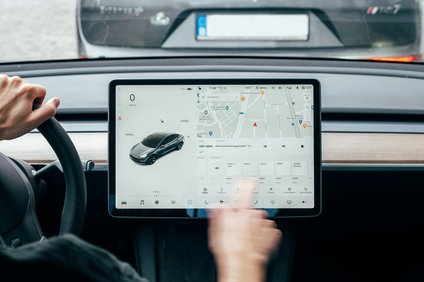Research - 06.03.2017 - 00:00
Study: Swiss online trade and internet use in 2017
How much money do we spend in the internet every month? And how has mobile use and shopping behaviour in Switzerland changed? These questions and many others were examined by Professor Thomas Rudolph and his team at the Institute of Retail Management at the University of St.Gallen (IRM-HSG).

7 March 2017. More than 1,200 consumers were interviewed in Switzerland. Despite decreasing retail trade turnovers, Swiss internet users spent more online than ever before.
Spare-time internet use distinctly on the up
Without the internet, our working world would come to a standstill in most industries. In the last four years, the internet has also made inroads into our spare time. If in 2013, people below 25 spent 2.4 spare-time hours per day in the internet, this has risen to no less than 3.9 hours. The same applies to the over 55s, who are spending as much as 3.2 hours of their spare time in the internet in 2017, in comparison with 1.3 hours in 2013. More and more people communicate in the internet in their spare time, read news there, shop, watch TV, stream series or amuse themselves on YouTube or dating platforms.
The internet makes our spare time so interesting that it has become our constant companion. It provides the infrastructure for better spare time around the clock. The increasing range of goods and services, as well as free competition across national borders, are resulting in a decrease in market concentration with regard to the most visited websites. We spend more time in the net and make use of more and more services. Accordingly, the ten most used websites only achieve a mere 50 per cent of user frequency in 2017. In 2015, this still amounted to 64 per cent of the "traffic". Facebook has surrendered first place to Google. With increasing competition, differentiation by means of a clearly recognisable competitive edged is also becoming more important in the internet.
Internet users expect better cross-channel goods and services
Among the 24 groups of goods that were examined, the internet users interviewed preferred to purchase 13 in stationary trade and seven in online trade, and with four groups of goods, cross-channel preference came top. Astoundingly, channel preference for pure online purchases of products that can be digitised, such as books, registered only a slight increase and stagnated for the first time with regard to products that cannot be digitised, such as cosmetics. More and more frequently, consumers like cross-channel purchases, which combine the advantages of both shopping worlds and thus improve the shopping experience in a synergetic manner.
Online trade increased to more than eleven billion Swiss francs
According to a projection by the IRM-HSG, Swiss online trade generated a turnover of 11.14 billion Swiss francs as at the end of 2016, which distinctly exceeds the estimates of other Swiss institutes. The projection of the Institute of Retail Management of the University of St.Gallen does not only include classic retail trade industries such as foodstuffs, furniture, sports, textiles and technology, but also digitisable products and services such as airline tickets and music downloads. In 2017, no fewer than 56 per cent of the interviewees made internet purchases once to twice a month, and nine per cent even once to twice a week.
Shopping tourism still on the increase
Online purchases made abroad are already at a high level now. The highest proportion of foreign purchases – with 25-30 per cent of all online purchases already being made abroad – was registered by airline tickets, holiday travel, clothing, books and software. The IRM-HSG assumes that there will be a further increase in the future because more foreign providers are pushing into the Swiss market. The internationalisation of Swiss trade through foreign providers has again increased substantially this year alone.
The frequency of mobile use has increased regardless of age. Among the 55-year-olds, the proportion of those who make mobile use of the internet through their smartphones once a day or more often increased by 16.2 per cent (in comparison with 2015). The age group of 24-35-year-olds also displayed a rapid increase in the daily use of the mobile internet by smartphone (2015: 69.5 per cent; 2017: 89.5 per cent). Mobile internet use grew in all areas (en route, at home and when shopping).
Photo: Photocase / FemmeCurieuse
More articles from the same category
This could also be of interest to you
Discover our special topics
















